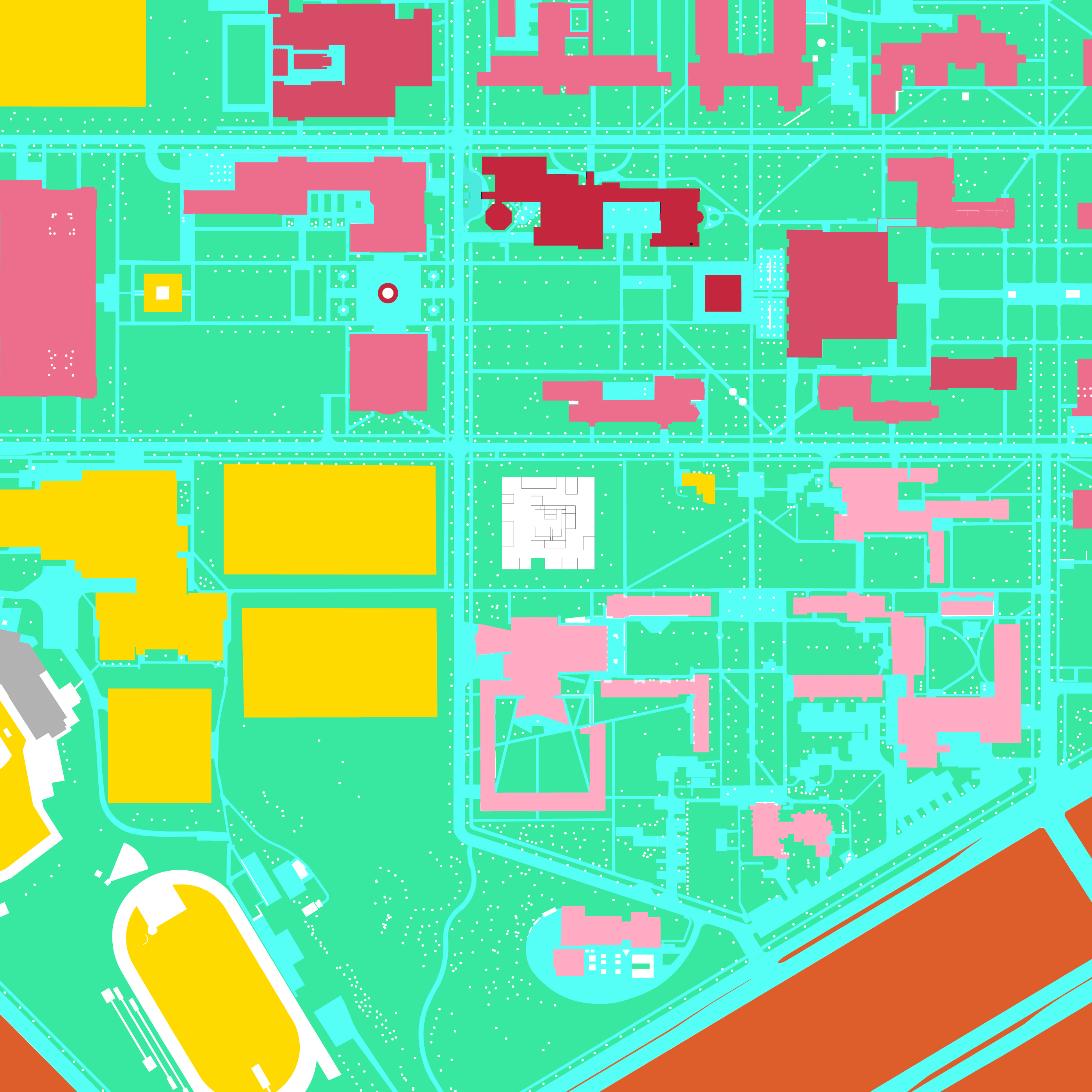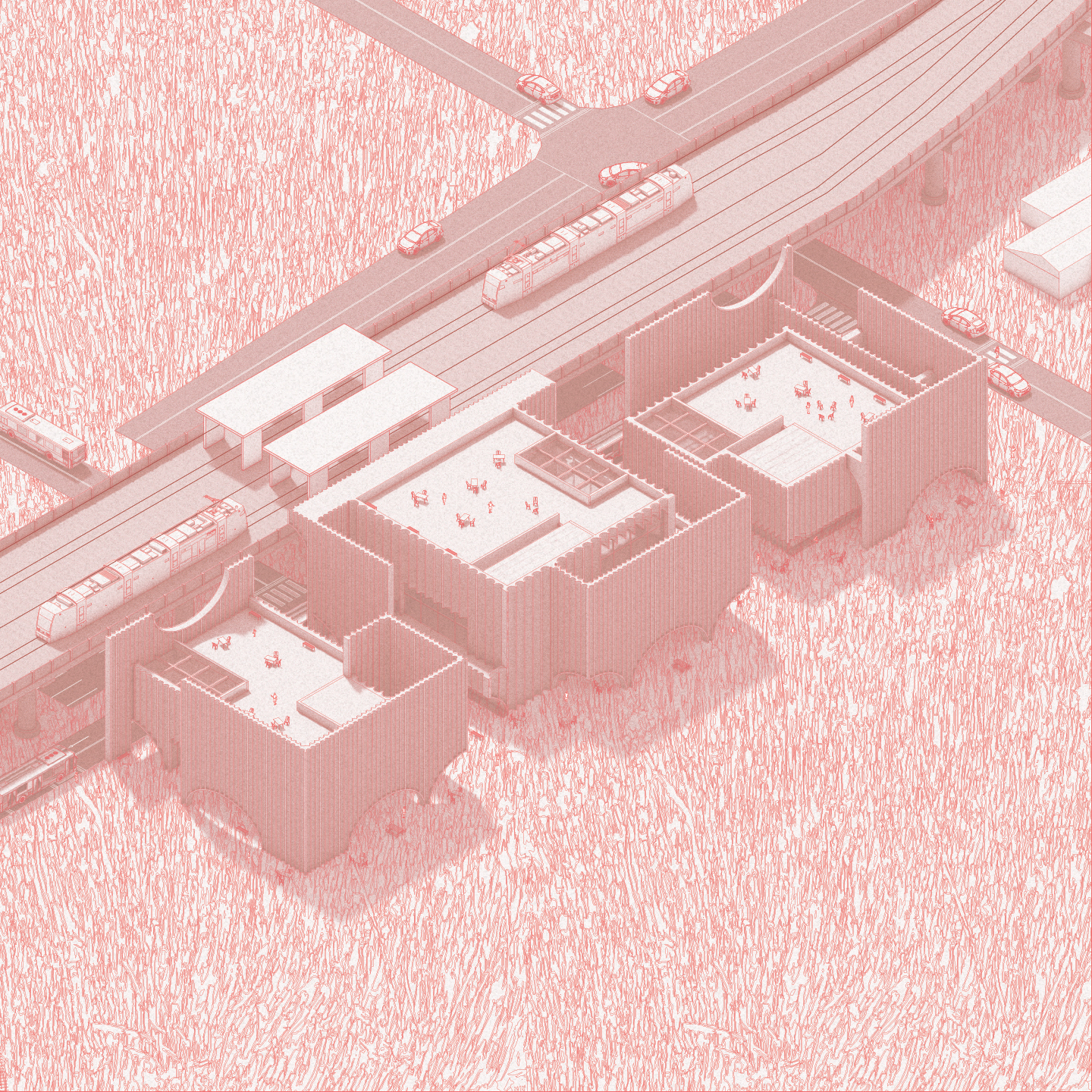The Urbanized Dorm
January—April 2019
Text. Plans (ground, second, third). Section. Diagrammed site plan. Exterior renderings.
Floor template diagrams.
Room type plans. Chunk model photos. Interior renderings. Detailed model photos.
Graduate housing in Rice University, Houston, TX, USA. Taught by Ryan Roark for ARCH 202.

The notion of autonomy in architecture has historically encompassed various issues of so-called “liberated” design: it may refer to pushing against the overlap that the field has with socio-economic and political positions; perhaps it refers to the critical objectivity that architecture should be approached with. Yet reading the term on a more literal level – freedom of certain formal parts at various levels of locality and isolation – begins to illustrate how differing systems operate and interact with each other. In a project such as this, the brief of a multi-housing dormitory already sets itself up to engage various design principles in conflict – the programmatic battle of public versus private, the formal clash of aggregation versus subtraction, and the pragmatic mediation between repetition and a desire for the unique.
This project, a housing block for graduate students at Rice University, articulates these struggles for a formal autonomy through its design foundation. Beginning with a floor template of units assembled in a grid, a new system of blocks and subtractions to the grid is introduced: these voids act with autonomy, forcing the ordering and appearance of units at various points around the building, and shaping how groups of units vary contextually from floor to floor. The result is the fragmented appearance of a singular formal template, spread from floor to floor and yet different.
Programmatically, it reflects a new understanding of the desires of graduate housing: one that acknowledges a desire for a unique space to live – or more fittingly, a desire to not notice the unit repetition that college housing usually entails. It creates unique contexts to each room based on how units beside and around have reacted to the subtractions, and the units’ aggregated-like quality begin to set units together in an almost urban fashion. In short, playing with formal autonomy and bending unit contexts around the building is done to reduce the typically institutional viewing of school buildings.

Ground floor plan.

Second floor plan.

Third floor plan.
 Section.
Section. Diagrammed site plan of the Rice University campus.
Diagrammed site plan of the Rice University campus.


 Exterior renderings.
Exterior renderings.



 Residential room type plans (from top: single, quad, double).
Residential room type plans (from top: single, quad, double).








 Interior renderings.
Interior renderings.





